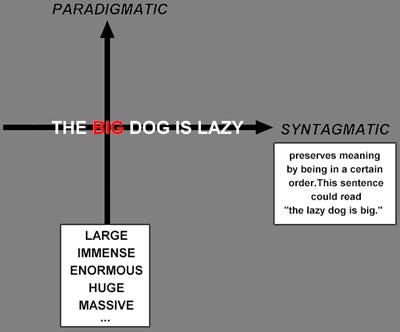|
Introduction to Barthes'
Theories
from Roland
Barthes : Theories
Roland Barthes presented
the postmodernist tradition with many useful specie of nomenclature
by which to describe what is occurring semioticly within discourse. The
following is a list of his theories intermixed with other poeples theories
that may be helpful in the understanding of the more difficult concepts.
Nomenclature

(external)
 Literary
Criticism Databank: Structuralism and Semiotics
Literary
Criticism Databank: Structuralism and Semiotics
|
